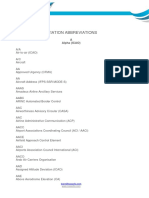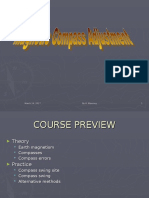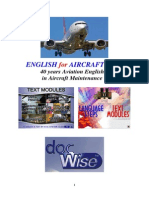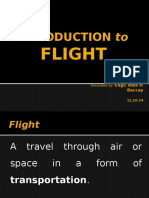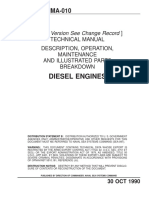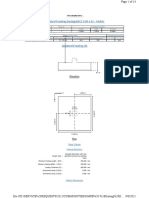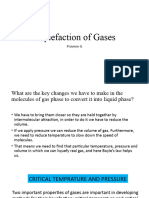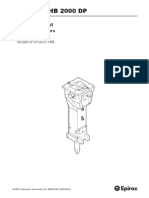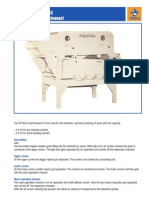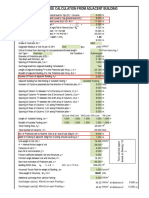100% found this document useful (1 vote)
112 views121 pagesD Aircraft Structure
This document provides a brief history of aircraft structural development and outlines the major structural components of fixed-wing aircraft. It discusses early pioneers like Cayley, Lilienthal, and the Wright Brothers and how their work led to advances in all-metal aircraft construction. The major stresses acting on aircraft and key structural parts are defined, including the wing, fuselage, and landing gear. Wing types, construction methods, and control surfaces are described. The document is an introduction to aircraft structures.
Uploaded by
lanceardc2Copyright
© © All Rights Reserved
We take content rights seriously. If you suspect this is your content, claim it here.
Available Formats
Download as PDF, TXT or read online on Scribd
100% found this document useful (1 vote)
112 views121 pagesD Aircraft Structure
This document provides a brief history of aircraft structural development and outlines the major structural components of fixed-wing aircraft. It discusses early pioneers like Cayley, Lilienthal, and the Wright Brothers and how their work led to advances in all-metal aircraft construction. The major stresses acting on aircraft and key structural parts are defined, including the wing, fuselage, and landing gear. Wing types, construction methods, and control surfaces are described. The document is an introduction to aircraft structures.
Uploaded by
lanceardc2Copyright
© © All Rights Reserved
We take content rights seriously. If you suspect this is your content, claim it here.
Available Formats
Download as PDF, TXT or read online on Scribd
/ 121


















